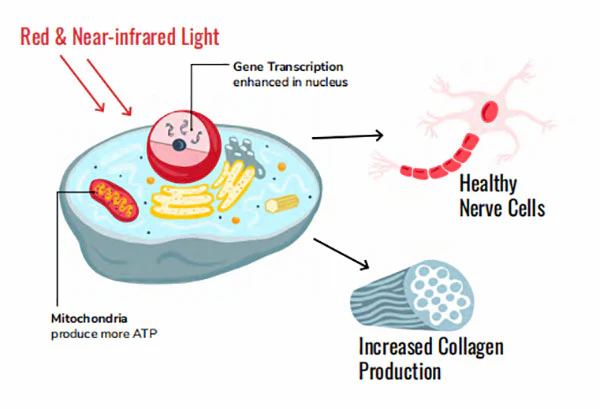In recent years, red light waves have attracted much attention for their wide range of applications in various fields. This paper explores the functions and applications of a specific red light wavelength of 850 nm.
First, I want to tell you a story.
In the 1980s, in order to promote the sustainable growth of plants in space, the National Space Administration (NASA) developed a lighting device, and later funded the completion of a plant growth device, and planted potatoes on the space shuttle in 1995. In the absence of gravity for a long time, astronauts found that muscles and bones atrophied and any wounds healed slowly. One day, one of the scientists accidentally scratched his hand while working. Because of this, he found that the wound on the hand working under the light healed faster. At this point, NASA began to enter the field of medical phototherapy.
At this point in the story, you must have discovered one of the functions of light.
Next, I want you to talk about light.
The light that our naked eyes can see is called visible light. The wavelength band of visible light is 400nm-700nm. The light within this range is called invisible light. Note that being invisible does not mean that it does not exist.
The red light physiotherapy mainly uses 590-660nm (red light) and 850nm (near-infrared light) as the main wave band non-invasive physiotherapy.
So what is the mechanism of action of physical therapy? In other words, how does red light therapy work on the human body?
Please see this picture:

In summary, light acts on the chromophore in the cell, the chromophore absorbs the light energy and converts it into heat and chemical energy, and then activates the mitochondrial respiratory chain in the cell, which leads to a series of cellular Reactions, producing more ATP.
Our skin is composed of a white cortex and dermis. According to research, 400nm light can penetrate 1mm of skin tissue, 500nm can penetrate up to 2mm, and red light (590-660nm) can penetrate up to 2mm. 6mm, reaching to the dermis. Helps our cells release more ATP, making us feel younger and more energetic.
The 850nm Wavelength (Near-infrared Light)
The 850nm wavelength is the signature near infra-red wavelength.
In many cases, the 850nm amplifies the benefits provided by the 810nm and 830nm wavelengths.
This wavelength has a range of therapeutic applications such as:
Anti-inflammatory benefits
850nm wavelengths can help to reduce joint and muscle pain and diminish general inflammation in the body.
Enhanced muscle recovery
A study observed the use of 850nm wavelengths on athletes and found that usage of the near-infrared light increased muscle mass after training, and decreased inflammation and oxidative stress in muscle biopsies.
Healing of wounds in the skin
Lesions heal faster when exposed to 850nm wavelength light therapy.
Reduction of lines, wrinkles, and hyperpigmentation
850nm can support the production of collagen, assisting with plumper, more radiant-looking skin, and a more uniform texture.
Orthodontics and tooth alignment
The use of the 850nm wavelength can foster the speedy realignment of teeth for patients undergoing orthodontics.
